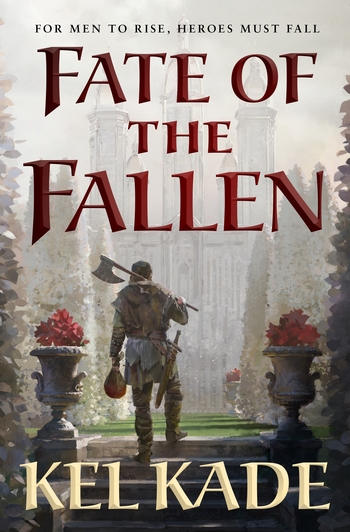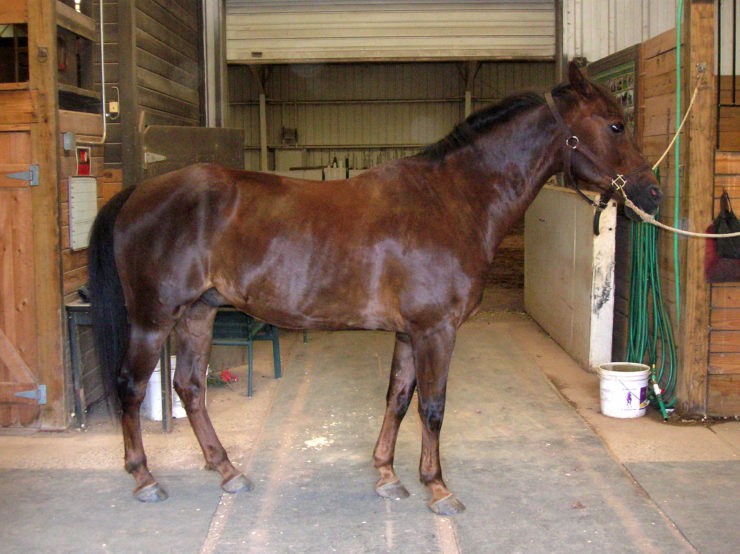Most horse breeds start within a geographical area, from stock that evolved for the conditions of that region. People breed what’s available nearby—the mare up the hill, the stallion down the road. Over time, the local horses take on a particular look and shared characteristics, as breeders gravitate toward specific types and functions.
Hence the Arabian, evolved in and for the desert and prized for its beauty, its speed and stamina, its fire. The Belgian draft horse, big and tremendously strong, famed for its pulling power. The Icelandic horse, bred in isolation for a thousand years, with its full-bore adaptation to the climate and terrain of Iceland.
Other breeds evolve out of a need or a fashion, and serve a specific function. The American Quarter Horse, originally a quarter-mile racer. The Thoroughbred, the king of the middle-distance race. The Standardbred, bred to meet a minimum standard of trotting speed.
Rarest of all is the breed that traces back to a single individual.
You’ll frequently see bloodlines within larger breeds, families that look and move and perform alike, stamped from the mold of one particular horse—usually a stallion; mares can also stamp their get, but a mare produces one foal a year (viable twins are extremely rare and multiple births vanishingly so) whereas a stallion can sire hundreds. Such names as *Bask and *Raffles in Arabians, in Quarter Horses Wimpy and Peppy and Leo and the tragic Impressive, the Thoroughbreds Man O’ War and Bold Ruler and Northern Dancer, represent ideals of their breeds, and above all, the ability to pass on the traits that made them exceptional.
One breed in particular is renowned for its quality and consistency, and every horse in that breed is a direct descendant of a single horse. That breed is the Morgan.
It really is remarkable when you think about it. Some 175,000 horses are registered as purebred Morgans, and every single one of them is a descendant of a chunky little horse born in northern New England in 1789. The horse’s breeder, Justin Morgan, called him Figure, but mostly he was known as the Morgan horse.
That horse did everything, and he did it better than just about anybody else. He out-pulled and out-ran the champions of the age. He did farm work, hauled wagons, packed freight, ran both running and trotting races, and carried his various owners all over northern New England. He died at the great age of thirty-two, not from old age but from being kicked by another horse.
Any horse that tough and that versatile is worth noting, but Justin Morgan’s horse passed it on. Whatever mare he was bred to, the offspring might get her coloring or her size, but the rest was a carbon copy of the sire. He was prepotent, and more than that, so were his sons and daughters.
That’s the breeder’s holy grail, to have an extraordinary horse who produces extraordinary foals over and over, consistently, from generation to generation.
Nobody is really sure who his parents were. The Morgan Horse Association inclines toward the story that his sire was a famous Thoroughbred named True Briton and his dam was of “Wild Air breeding,” whatever that is. Maybe she was a Narragansett Pacer. Or his parents might have been of “Dutch” extraction—maybe not a Friesian as such, but possibly from stock imported from the Netherlands. Or he might have had Spanish blood, or even Welsh cob—he resembles the best of those breeds in quite a few particulars.
What we do know is that he was short (just about 14 hands high), muscular, with short, strong legs and a short, strong back and a high, arched neck with a sturdy but well-shaped head and little curly ears. He was solid bay, no white; his mane and tail were thick. He was a chonk, and he was smart, with a calm temperament and stamina that literally went on for days. The harder he worked, the fitter he got.
Buy the Book


Fate of the Fallen
He was the ideal horse for his region and time. A horse who could do it all, year after year, without costing the earth to feed, and who could produce more just like him, was just the thing for thrifty New England. His descendants continued the tradition, from farm labor to fancy saddle and harness horses to famous trotting racers, and even as cavalry mounts. These days they’re showing in Morgan shows, excelling as pleasure horses, and making inroads in the rarefied discipline of dressage. They’ve been internationally competitive in carriage driving, and they’ve even impressed the most famous Director of the Spanish Riding School of Vienna, Colonel Alois Podhajsky, who certainly knew a good horse when he saw one.
The pride of the Morgan breed is the ability to do it all, and do it well. When I was riding one of the Kennebec Morgans for a friend, his breeder was proud to say that that horse’s dam could plow a field one day, spiff up and win a show the next. I did all sorts of things with her son, who was as bright as a copper penny with a perfect white diamond on his forehead, but otherwise the spitting image of his ancestor (right down to the size): from parades to dressage shows to riding trails, and before I came along he’d been a 4-H project and been trained as a saddle-seat show horse. He ended his days as a family horse, packing his owner’s grandkids around and teaching new generations all about horses and riding.
That’s the legacy of Justin Morgan’s horse. You can still see him, over and over, in the modern Morgan: his look, his versatility, and his legendary toughness.
Photo by Countercanter, licensed under the Creative Commons Attribution-Share Alike 3.0 Unported license, via Wikimedia Commons.
Judith Tarr is a lifelong horse person. She supports her habit by writing works of fantasy and science fiction as well as historical novels, many of which have been published as ebooks by Book View Cafe. She’s even written a primer for writers who want to write about horses: Writing Horses: The Fine Art of Getting It Right. Her most recent novel, Dragons in the Earth, features a herd of magical horses, and her space opera, Forgotten Suns, features both terrestrial horses and an alien horselike species (and space whales!). She lives near Tucson, Arizona with a herd of Lipizzans, a clowder of cats, and a blue-eyed dog.










